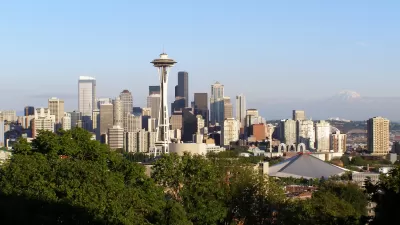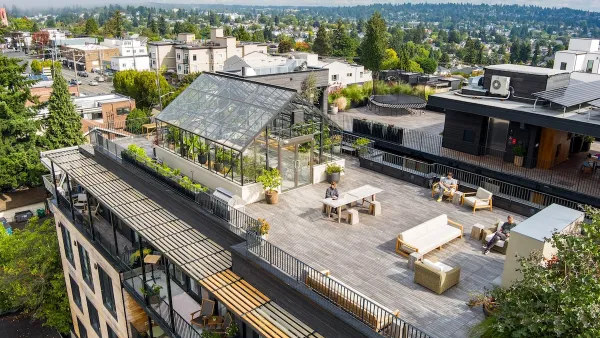Seattle developers are moving ahead with plans for three new downtown office towers - the first in 20 years - despite abundant vacant space in the area. Much sought-after tech tenants will be a tough lure because “[t]hey like weird buildings.”

Among the challenges facing the developers of the first three office towers to rise in Seattle's central business district in twenty years: "many traditional downtown tenants are getting by with less space due to technology and slower growth, while the tech firms that have driven Seattle’s office boom haven’t shown much affinity for the central business district," writes Sanjay Bhatt.
"New skyscrapers will have to justify their higher rents with smart design, super-efficient floors and killer amenities, experts say, because of abundant space in the business district."
"Tech firms are high on the list of sought-after tenants, given their heavyweight presence in the Seattle area," he adds. But these firms haven’t been attracted to downtown’s towers — with some notable exceptions."
"[Chad] Yoshinobu, the design director at Gensler’s Seattle office, says the typical tech firm finds it more attractive and sustainable to reuse existing space that is 'hackable,' especially older low- and mid-rise buildings with big floors, character and high ceilings."
"But Matt Christian, executive director of Cushman & Wakefield/Commerce, says that in markets across the nation, tech companies are moving downtown because of the easy access to transportation hubs and amenities."
FULL STORY: Filling downtown Seattle skyscrapers a tall order

Planetizen Federal Action Tracker
A weekly monitor of how Trump’s orders and actions are impacting planners and planning in America.

Maui's Vacation Rental Debate Turns Ugly
Verbal attacks, misinformation campaigns and fistfights plague a high-stakes debate to convert thousands of vacation rentals into long-term housing.

San Francisco Suspends Traffic Calming Amidst Record Deaths
Citing “a challenging fiscal landscape,” the city will cease the program on the heels of 42 traffic deaths, including 24 pedestrians.

Amtrak Rolls Out New Orleans to Alabama “Mardi Gras” Train
The new service will operate morning and evening departures between Mobile and New Orleans.

The Subversive Car-Free Guide to Trump's Great American Road Trip
Car-free ways to access Chicagoland’s best tourist attractions.

San Antonio and Austin are Fusing Into one Massive Megaregion
The region spanning the two central Texas cities is growing fast, posing challenges for local infrastructure and water supplies.
Urban Design for Planners 1: Software Tools
This six-course series explores essential urban design concepts using open source software and equips planners with the tools they need to participate fully in the urban design process.
Planning for Universal Design
Learn the tools for implementing Universal Design in planning regulations.
Heyer Gruel & Associates PA
JM Goldson LLC
Custer County Colorado
City of Camden Redevelopment Agency
City of Astoria
Transportation Research & Education Center (TREC) at Portland State University
Jefferson Parish Government
Camden Redevelopment Agency
City of Claremont





























